Association of Photographers of the Atomic Bomb Destruction of Hiroshima
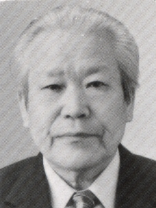
Mitsuo Matsushige
Mitsuo Matsushige (1911-1989) worked for the Hiroshima Prefectural government as an X-ray technician. He was at his home in the town of Furuichi (in Hiroshima’s present-day Asaminami Ward), Hiroshima Prefecture, on August 6, 1945. He took refuge at Kanda Bridge near his home, which was located around seven kilometers north of the hypocenter, and took two photographs of the mushroom cloud. He also captured on film the area around the center of Hiroshima as it became enveloped in smoke. From the second floor of his home, he photographed a truck carrying survivors that was headed in the direction of the town of Kabe (in present-day Asakita Ward). After the war, he worked in the field of health care for the prefectural government. Mr. Matsushige died in 1989 at the age of 78.
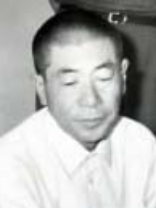
Gonichi Kimura
Gonichi Kimura (1905–1973) became a member of the photography team of the Army Marine Training Division, located in Hiroshima’s Ujina-machi area (present-day Minami Ward), after working in the photography department of the Chugoku Shimbun. After experiencing the atomic bombing on the grounds of the training division, he took from a distance photographs of the mushroom cloud and the city center as it became enveloped in smoke. From late August to early September 1945, with a medical survey team led by Tokyo Imperial University Professor Masao Tsuzuki, Mr. Kimura photographed A-bomb survivors suffering greatly from acute effects of radiation due to the atomic bombing, including spotting caused by subcutaneous bleeding and hair loss. He lost his wife in the atomic bombing. After the war, he managed a souvenir shop in Hiroshima. Mr. Kimura died at the age of 67.
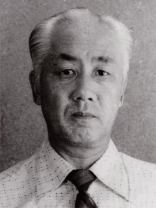
Toshio Fukada
Toshio Fukada (1928–2009) was mobilized for work at the Army Weapons Supply Depot (in Hiroshima’s present-day Minami Ward) while still studying at the former Sotoku Junior High School in the city. Graduating from the five-year school after only four years, he continued working at the depot. From the depot’s grounds, located around 2.7 kilometers southeast of the hypocenter, he took a series of four photographs of the mushroom cloud around 20 minutes after the A-bomb’s detonation. He used a small camera he had been carrying in the back pocket of his trousers. Of all the existing photos of the mushroom cloud of Hiroshima’s atomic bombing, Mr. Fukada’s photos were taken from the closest location. After the war, he managed a camera shop in the city. Mr. Fukada died at the age of 80.
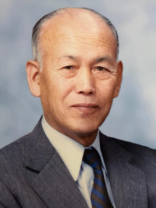
Masami Oki
Masami Oki (1914–2007) worked at the Kure Naval Arsenal in Kure City. Around 40 minutes after the A-bomb’s detonation, he photographed the mushroom cloud from the arsenal, located around 20 kilometers from the hypocenter. The next day, August 7, he joined a Navy rescue team from Kure that traveled to Hiroshima. Later, he again went to the city and photographed the Hiroshima Prefectural Industrial Promotion Hall (now the Atomic Bomb Dome), which was located near the hypocenter and had been badly damaged in the bombing, as well as other scenes. After the war, he worked in the Kaita Town government office, where he served as assistant mayor and treasurer. Mr. Oki died at the age of 93.
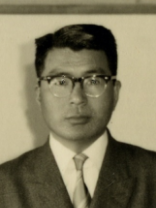
Totaro Karasuda
Totaro Karasuda (1917-1978) was an administrative official at the Hiroshima Sanatorium for Wounded Soldiers, located in the town of Saijo (present-day Higashihiroshima City), Hiroshima Prefecture. He photographed the mushroom cloud from the sanatorium, around 25 kilometers northeast of the hypocenter. On the afternoon of August 6, he traveled to Hiroshima to help with aid efforts, taking notes of the names of victims and the extent of their injuries as a substitute for medical charts while sanatorium physicians provided treatment at the Hiroshima East Police Station, where the wounded had taken refuge. After the war, he served in such positions as chief of the accounting section at the Chugoku Regional Medical Bureau of Japan’s Ministry of Health and Welfare. Mr. Karasuda died at the age of 60.
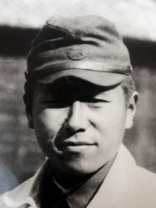
Masami Onuka
Masami Onuka (1921–2011) was a member of the photography team of the Army Shipping Command in the area of Ujina-machi (in the city’s present-day Minami Ward) in Hiroshima. On August 7, he traveled to Ninoshima Island, where the wounded were being transported. Under the direction of a military physician, he took photographs of soldiers and women badly burned in the bombing. Afterward, he also took photos of temporary relief stations and other locations in the city. He searched for his mother, who lived in the city, but was unable to find even her remains. After the war, he returned to his hometown of Kawamoto-Town, Shimane Prefecture, and managed a photo studio. Mr. Onuka died at the age of 89.
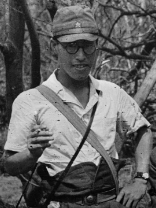
Mitsugi Kishida
Mitsugi Kishida (1916–1988) opened a photo studio on the Hondori shopping street in downtown Hiroshima before becoming a member of the news team of the Chugoku Military District Headquarters, which was located in Hiroshima Castle. He witnessed the mushroom cloud while on an official trip to the town of Yoshida (present-day Akitakata City) in northern Hiroshima Prefecture and returned to Hiroshima the same day. The next day, he took photographs from the ruins of his photo studio, around 450 meters from the hypocenter. He was one of the first to photograph the devastated city center. After the war, he reopened his photo studio after rebuilding it on the Hondori shopping street. Mr. Kishida died at the age of 72.
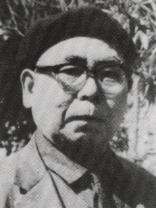
Toshio Kawamoto
Toshio Kawamoto (1901–1968) managed a photo studio in Hiroshima and was also a commissioned member of the photography team of the Hiroshima Prefectural Police Department. He had been on an official trip for police work to the town of Saijo (present-day Higashihiroshima City), Hiroshima Prefecture, since the day before the atomic bombing. After a series of car rides, he returned to Hiroshima on the afternoon of August 6. Starting the following day, August 7, he traveled around the city at the request of the police, photographing the destruction of buildings and damage to transportation systems. After the war, he managed a photo studio. Mr. Kawamoto died at the age of 66.
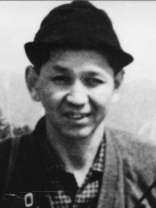
Yotsugi Kawahara
Yotsugi Kawahara (1922–1972) was born in present-day Kure City, Hiroshima Prefecture. He was a member of the photography team of the Army Shipping Command, located around 4.6 kilometers southeast of the hypocenter, and experienced the atomic bombing while there. Accompanying a survey team dispatched from the Japanese Imperial General Headquarters, he photographed the devastation in the center of Hiroshima as well as the temporary relief stations overflowing with the wounded. The negatives of his photographs were destroyed by order of Japan’s military at the war’s conclusion, but Mr. Kawahara held on to prints of some of the photos, keeping them in a handmade album. After the war, he managed a photo studio in Hiroshima. Mr. Kawahara died at the age of 49.
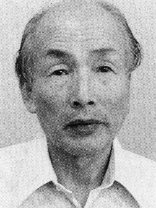
Isao Kita
Isao Kita (1911–2001) worked as chief engineer of the Hiroshima District Meteorological Observatory (present-day Hiroshima Local Meteorological Office). He experienced the atomic bombing at the observatory, which was located on top of Ebayama Hill (in the city’s present-day Naka Ward), around 3.7 kilometers from the hypocenter. From the end of August to late September 1945, he took photographs including of Aioi Bridge, near the hypocenter, whose railings had collapsed in the bombing. He also captured the situation involving the “black rain” that had fallen at the time as part of a survey conducted by the meteorological group of the Special Committee for the Investigation and Research of the Atomic Bomb Disaster established by Japan’s Ministry of Education. After the war, he worked at the meteorological observatory in Hiroshima and other weather stations in western Japan. Mr. Kita died at the age of 89.
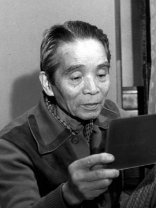
Yoshita Kishimoto
Yoshita Kishimoto (1901–1989) managed a photo studio in Hiroshima’s Tanaka-machi area (in the city’s present-day Naka Ward). He experienced the atomic bombing at his home in the area of Ushita-cho (in present-day Higashi Ward). His oldest daughter, who was eight at the time, was killed in the bombing. For some time afterward, he could not bring himself to pick up a camera. But in the fall of 1945, at the request of Chugoku Haiden (present-day Chugoku Electric Power Company), he traveled around the city and meticulously captured on film the damage to the power distribution system, including power plants and utility poles. After the war, he continued to manage his photo studio in Hiroshima and took photographs of the city as it recovered from the devastation. Mr. Kishimoto died at the age of 87.
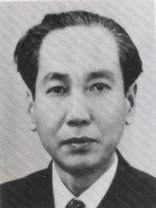
Taichi Morimoto
Taichi Morimoto (1916–1978) graduated from the Oriental School of Photography in Tokyo and opened a photo studio in Hiroshima. During the war, he was drafted and assigned to a military unit in Yamaguchi Prefecture. On August 17, 1945, two days after the war had ended, he entered Hiroshima with his favorite Leica camera. His home in the area of Nobori-cho (in Hiroshima’s present-day Naka Ward) was completely destroyed. He slept in a warehouse in the area of Ujina-machi (in present-day Minami Ward) and walked around in search of acquaintances and took photographs. Mr. Morimoto died at the age of 61.
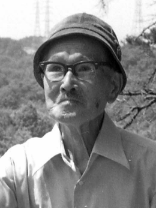
Kazuma Hayashi
Kazuma Hayashi (–1979) worked at the Fukuya Department Store in Hiroshima. He experienced the atomic bombing while at the dormitory of a distribution company in the area of Minamikanon-machi (in the city’s present-day Nishi Ward), to which he had been dispatched by Fukuya to help in their work. In the fall of 1945, he commuted to Hiroshima from the village of Shiwahori (in present-day Higashihiroshima City), where his family had been evacuated, and captured on film the Hatchobori area, including the structures of the reinforced concrete buildings of the Fukuya Department Store and the Chugoku Shimbun that remained after the post-bombing fires. In 1915, when he was a student at the First Hiroshima Prefectural Junior High School (present-day Kokutaiji High School), he participated in the first tournament now known as the National High School Baseball Championship. Mr. Hayashi died at the age of 84.

Photo team of the Army Shipping Command
The photography team of the Army Shipping Command was headquartered in Hiroshima’s Ujina-machi area (in the city’s present-day Minami Ward), around 4.6 kilometers southeast of the hypocenter. Among the members of the photography team were Masami Onuka and Yotsugi Kawahara, whose photographs are also included in these photographic materials. Photos known to have been taken by members of the group but not specifically by whom are identified as being taken by the Army Shipping Command photography team.
The Chugoku Shimbun
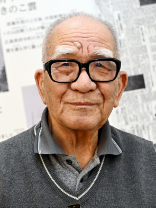
Seiso Yamada
Seiso Yamada (1928–) was employed as a page at the Chugoku Shimbun’s Culture Department after graduating from a national elementary school in 1943. He worked while attending junior high school at night. At the time he and a friend were hiking to Mikumari Gorge in the town of Fuchu, around 6.5 kilometers northeast of Hiroshima, he saw the atomic bomb’s mushroom cloud and took a photograph about two minutes after the bomb’s detonation. It is believed to be the first photo taken of the mushroom cloud after the atomic bombing of Hiroshima. After the war, he served in such positions as a reporter covering professional baseball and chief of the newspaper company’s Okayama branch office. Mr. Yamada still lives in the town of Fuchu.
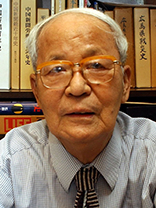
Yoshito Matsushige
Yoshito Matsushige (1913–2005) was from Kure City, Hiroshima Prefecture. He was a staff photographer for the Chugoku Shimbun, with its head office in Hiroshima, and a member of the news team of the Chugoku Military District Headquarters. He experienced the atomic bombing at his home, around 2.8 km from the hypocenter. He took five photographs of the devastation in Hiroshima on the day of the bombing that included scenes of victims of the atomic bombing who had fled to the west side of Miyuki Bridge, around 2.2 kilometers southeast of the hypocenter. Among the photos taken of the atomic bombing of Hiroshima, those photos were the only ones that captured images of those suffering from the bombing in the city. After working for the newspaper company after the war, he became head of the Association of Photographers of the Atomic Bomb Destruction of Hiroshima, which was established in 1978, devoting himself to the preservation of A-bombing documentary photos. He also continued communicating his experiences in the atomic bombing to the public until the end of his life. Mr. Matsushige died at the age of 92.
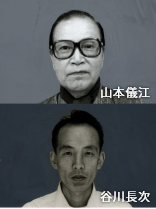
Yoshie Yamamoto and Nagaji Tanigawa
Yoshie Yamamoto (1911–1998) joined the Chugoku Shimbun in 1943 after managing a photo shop developing and printing photos, while also running a barber shop, at 33 Zaimoku-cho, near the present-day Cenotaph for the A-bomb Victims. He was drafted into the military and experienced the atomic bombing in the area of Nishikanon-machi (in Hiroshima’s present-day Nishi Ward). After being demobilized on September 1, 1945, he returned to the photography department at the newspaper and took a silhouette photograph of a still-standing chimney in the area of Ote-machi (in present-day Naka Ward). Collaborating with Nagaji Tanigawa, he took a series of two photos of the ruins seen to the south from the rooftop of the company’s former head office, located in Hiroshima’s Kaminagarekawa-cho. After the war, he served in such positions as head of the company’s survey department. Mr. Yamamoto died at the age of 86.
Nagaji Tanigawa (1924–2002) joined the Chugoku Shimbun in 1938. He collaborated with Yoshie Yamamoto and took a series of two photographs of the ruins seen to the south from the rooftop of the company’s former head office, located in Hiroshima’s Kaminagarekawa-cho. After the war, he served as head of the company’s photography department and a senior writer. Mr. Tanigawa died at the age of 78.
The Asahi Shimbun
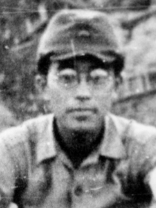
Hajime Miyatake
Hajime Miyatake (1914–1985) was a member of the photography department of the Asahi Shimbun’s Osaka head office when he took photographs of the atomic bombing. After the atomic bombing, he stayed in Hiroshima during the period August 9–12, 1945, as a photographer for the propaganda team of the Chubu Military District Headquarters, based in Osaka, photographing the devastation shortly after the bombing. After the war, he continued to hide the negative films in the space under the floor of his house to protect them from being confiscated by the GHQ. Mr. Miyatake died at the age of 71.
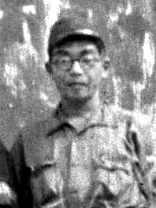
Eiichi Matsumoto
Eiichi Matsumoto (1915–2004) was a photographer in the publishing department of the Asahi Shimbun’s Tokyo head office when he captured scenes of the atomic bombings on film. He took photos during the course of 22 days in Nagasaki and then traveled to Hiroshima, staying there for eight days starting on September 18, 1945. He was one of the few news photographers who photographed both Hiroshima and Nagasaki shortly after the bombings. After the war, he continued to hide the negative films in a company locker to protect them. Mr. Matsumoto died at the age of 89.
The Mainichi Newspapers
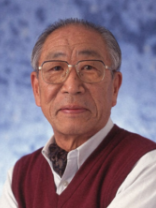
Yukio Kunihira
Yukio Kunihira (1916–2009) was a member of the photography department of the Mainichi Newspapers’ Osaka Head Office. On the morning of August 9, 1945, three days after the atomic bombing of Hiroshima, he traveled to the city as a member of a news team dispatched from Osaka and photographed the devastation of the city, including one photograph that shows a young girl whose face was badly injured in the bombing. The photo is now displayed at the entranceway of the Hiroshima Peace Memorial Museum’s main building. After the war, he served as chief of the photography department at the company’s Osaka Head Office and other positions. Mr. Kunihira died at the age of 92.

Kishiro Watanabe
Kishiro Watanabe (1902–1952) was chief of the Yamaguchi Bureau of the Mainichi Newspapers’ Kyusyu Head Office when he took photographs of the atomic bombing. He was one of the reporters who traveled to Hiroshima from the Yamaguchi Bureau shortly after the atomic bombing. He photographed the destroyed city, including the area near the Hiroshima Prefectural offices in the district of Kako-machi (in the city’s present-day Naka Ward), near the hypocenter. Mr. Watanabe died at the age of 49.

Entaro Yamagami
Entaro Yamagami was born in 1907. At the time of the atomic bombing, he was a member of the photography department of the Mainichi Newspapers’ Osaka Head Office. In early September 1945, one month after the atomic bombing, he photographed scenes of Hiroshima as well as the activities of the Manhattan Engeneer District survey team, which had been sent to Japan by the United States. He also photographed Beijing, China, during the Sino-Japanese War, and Taiwan when it was under Japanese rule. After the war, he took aerial photographs of areas in Osaka and Kobe that had been damaged by air raids during the conflict.

Tatsuro Niimi
Tatsuro Niimi (1914–1948) was a member of the photography department of the Mainichi Newspapers’ Osaka Head Office. He traveled to Hiroshima in early September 1945, one month after the atomic bombing, and photographed the devastation of the city as well as the activities of the Manhattan Engeneer District survey team, which had been sent to Japan by the United States. Mr. Niimi died at the age of 34.
The Domei News Agency
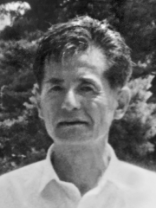
Takashi Saeki
Takashi Saeki (1915–1997), a native of Tokyo, became a member of the photography department at the Domei News Agency’s Osaka branch office in March 1945. He photographed Hiroshima during the period from August 9 to around August 17. One of his photographs, showing the city reduced to ashes with only one chimney standing, was published in the Asahi Shimbun and Mainichi Shimbun on August 19 and is said to have been the first photo to convey to all of Japan the devastation caused by the atomic bombing. After the war, in 1948, he changed jobs to work at the Yomiuri Shimbun in the photography department at its Osaka head office and elsewhere. Mr. Saeki died at the age of 82.

Satsuo Nakata
Satsuo Nakata (1920–1994), a native of Osaka, joined the Domei News Agency in 1943 and was assigned to the editorial department at its Osaka branch office. He traveled to Hiroshima accompanying a survey team led by Osaka Imperial University (present-day Osaka University)’s Professor Tsunesaburo Asada on August 10, 1945. Through August 11, the following day, he took photographs including of a Sanyo Line freight train derailed by the atomic bomb’s blast and the bodies of people who died in the bombing at the Western Drill Ground. His photo of an incinerated truck was carried in the August 20 editions of the Yomiuri Hochi Shimbun and other newspapers. After the war, he worked for a time at Kyodo News, the successor organization to the Domei News Agency. Mr. Nakata died at the age of 74.
Shigeo Hayashi
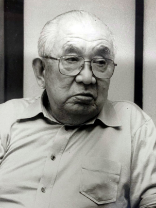
Shigeo Hayashi (1918–2002) was born in Tokyo. After graduating from the Tokyo Professional School of Photography, he joined Tohosha, a publisher of photography magazines for propaganda targeting overseas countries, in 1943. In October 1945, he accompanied the special committee for the investigation of A-bomb damages, a survey team set up in the Academic Research Council by Japan’s Ministry of Education. He photographed scenes in Hiroshima, including a 360-degree panorama of the hypocenter and the surrounding ruins. He also took numerous photographs documenting destruction from the bombing in Nagasaki. After the war, he continued to work as a photographer in Tokyo. He also served as chairman of a steering committee for the Hankaku Shashin Undo—the Anti-Nuclear Photography Campaign, a group of photographers dedicated to the exhibition and preservation of photographs of the atomic bombings. Mr. Hayashi died at the age of 84.
Shunkichi Kikuchi
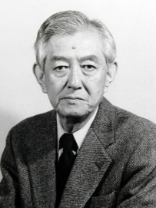
Shunkichi Kikuchi (1916–1990) was born in Hanamaki City, Iwate Prefecture. After graduating from the Oriental School of Photography in Tokyo, he joined Tokyo-based Tohosha, where he worked as a photographer for photography magazines distributing propaganda that targeted overseas countries. In October 1945, he accompanied the medical team of the special committee for the investigation of A-bomb damages, a survey team set up in the Academic Research Council by Japan’s Ministry of Education. He photographed numerous cases of wounds and radiation-induced symptoms suffered by A-bomb survivors at hospitals and relief stations in Hiroshima. He later worked as a photographer in scientific and other fields. He also participated in the activities of the Hankaku Shashin Undo—Anti-Nuclear Photography Campaign with Shigeo Hayashi and others. Mr. Kikuchi died at the age of 74.
Nippon Eigasha (Japan Movie Co.)

Nippon Eigasha (Japan Movie Co.)
Nippon Eigasha (Japan Movie Co.) was established as Nippon News Eigasha in 1940 and became Nippon Eigasha the following year. During World War II, the company produced many propaganda films in support of national policy. In 1951, when Japan was under Allied occupation after the war, Nippon Eigasha, with its news film division serving as the main pillar, was reorganized into Nippon Eiga Shinsha, fully funded by the Japanese entertainment company Toho. The educational film division of Nippon Eigasha was divided into two companies. Nippon Eiga Shinsha took over the rights to “Atomic Bomb―The Disastrous Damage of Hiroshima―Nippon News #257” and a documentary film shot with a scientific survey team, both of which were filmed in 1945. The former news footage is now owned by Japan Broadcasting Corporation (NHK). Meanwhile, Nichiei Eizo, an offshoot of Nippon Eigasha, took over the rights to the latter documentary film, whose ownership was later transferred to RCC Broadcasting. The film was then donated to the National Film Archive of Japan.